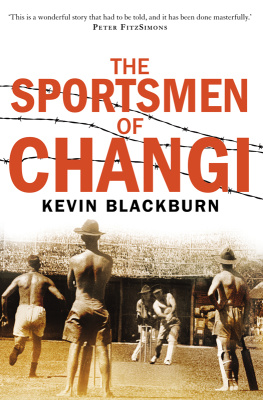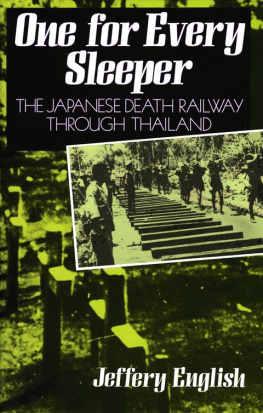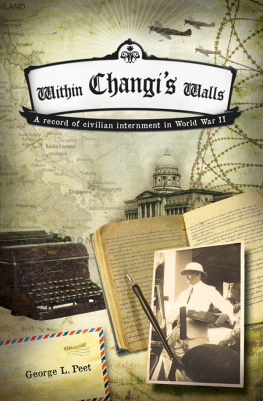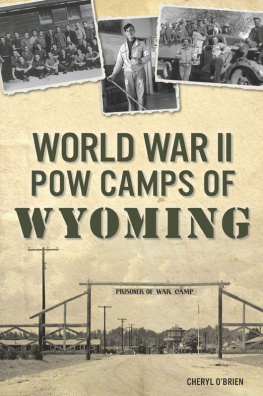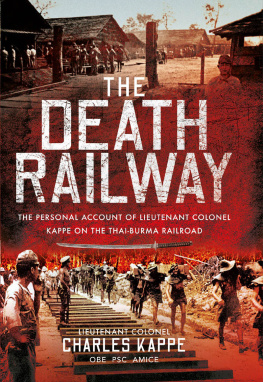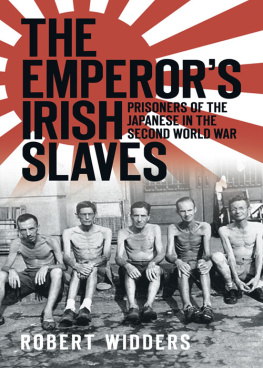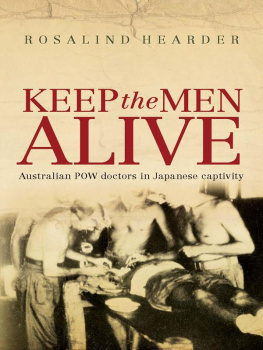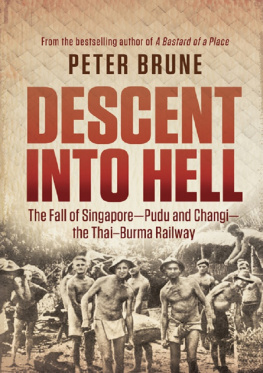THE
SPORTSMEN
OF
CHANGI
KEVIN BLACKBURN is an Associate Professor in History at the National Institute of Education, Nanyang Technological University, Singapore, where he has taught since 1993. With British historian Karl Hack he wrote Did Singapore Have to Fall? (2004) and co-edited Forgotten Captives in Japanese Occupied Asia (2008). Growing up in Australia among the cattle properties around Rockhampton and the pineapple farms of Yeppoon, Kevin Blackburn heard an older generation tell stories of how they had fought the Japanese military in far-off places. Since finishing his studies at the University of Queensland, he has traced this wartime generations experiences: walking the battlefields and visiting the places of captivity, trying to uncover what did happen and what did not.


A NewSouth book
Published by
NewSouth Publishing
University of New South Wales Press Ltd
University of New South Wales
Sydney NSW 2052
AUSTRALIA
newsouthpublishing.com
Kevin Blackburn 2012
First published 2012
10 9 8 7 6 5 4 3 2 1
This book is copyright. Apart from any fair dealing for the purpose
of private study, research, criticism or review, as permitted under the
Copyright Act, no part may be reproduced by any process without
written permission. Inquiries should be addressed to the publisher.
National Library of Australia Cataloguing-in-Publication entry
Author: Blackburn, Kevin, 1965
Title: The sportsmen of Changi/Kevin Blackburn.
ISBN: 9781742233024 (pbk.)
ISBN: 9781742241005 (ebook: epub)
ISBN: 9781742243290 (ebook: Kindle)
Notes: Includes index.
Subjects: Changi POW Camp (Changi, Singapore).
Prisoners of war Sports Singapore Changi.
Prisoners of war Recreation Singapore Changi.
Sports Singapore Changi.
World War, 1939-1945 Singapore Changi Prisoners and
prisons, Japanese.
World War, 1939-1945 Social aspects Singapore Changi.
Dewey Number: 796.095957
Design Josephine Pajor-Markus
Cover Nada Backovic Design
Cover images Australians playing cricket on an improvised wicket in Malaya, 1941,
Australian War Memorial (AWM09963); iStockphoto
Printer Everbest
This book is printed on paper using fibre supplied from plantation or sustainably managed forests.
Glossary
ABC | Australian Broadcasting Corporation |
AIF | Australian Imperial Force |
Attap | Palm thatch (in Malay) |
AWM | Australian War Memorial |
CMF | Citizen Military Forces |
CO | Commanding Officer |
GOC | General Officer Commanding |
IWM | Imperial War Museum |
Kampong | Village (in Malay) |
NAA | National Archives of Australia |
NAS | National Archives of Singapore |
NLA | National Library of Australia |
NCO | Non Commissioned Officer |
Padang | Common or recreational ground (in Malay) |
POW | Prisoner of war |
RAAF | Royal Australian Air Force |
RAF | Royal Air Force |
Sungei | Creek or river (in Malay) |
TNA | The National Archives, Kew, London |
YMCA | Young Mens Christian Association |
YWCA | Young Womens Christian Association |
Acknowledgments
I would like to thank the many veterans and members of their families whom I interviewed and corresponded with while doing research for this book. There have been so many that it would be difficult to mention all of them here, so they are listed in the bibliography. In the text of the book, at many places, they are quoted and described. I would also like to thank colleagues who helped with the research and gave advice on the manuscript.
Historians Nick Aplin, Bernice Archer, Peter Cochrane, Peter Horton, Hank Nelson, Dave Park and Wang Zhenping at times read parts of the manuscript or helped with the research. Mark Dapin gave helpful advice. Glenda Lynch and Roger Nixon provided excellent research assistance in Canberra and London. I am grateful to Jeff Leng for drawing the maps.
Thanks should also go to the Australian War Memorial, the National Archives of Australia, and the National Library of Australia for giving permission to use their collections. In the United Kingdom, their counterparts, The National Archives and the Imperial War Museum also need to be thanked for allowing me access to their collections. In particular, Rod Suddaby gave invaluable suggestions.
The book was made possible by a research grant from the National Institute of Education at Nanyang Technological University in Singapore.
Thanks also to Phillipa McGuinness, Uthpala Gunethilake and Heather Cam at NewSouth Publishing, and to editor Sarah Shrubb, for helping turn the topic of sport and Australian prisoners of war under the Japanese from an idea into a book.
Above all, I would like to thank my wife Tan Swee Ngin and our children Emily and Nicolas, who have often been with me on the journeys that have helped produce this book, from the jungles of the old battlefields and camps to the suburban homes of the veterans who fought in these battles and were imprisoned in the camps.
Introduction
Night falls over the Changi prisoner of war (POW) camp on 15 August 1945. A Japanese commander announces to the guards and prisoners that the war is over and the prisoners will be killed in the morning. Japanese officers start burning their records, while guards commence rounding up POWs and shooting them. Guards sadistically bayonet the POWs who are wounded. Panic spreads among the POWs as they flee the camp. This is one of the last scenes of the Australian Broadcasting Corporations television series Changi, shown on the evening of Sunday, 18 November 2001.
For many Australian viewers, the Changi massacre they saw that night on television seemed realistic and in keeping with stereotypes of Japanese guards. They were prepared to believe it. But it never happened. The truth is that the POWs and the guards simply waited for the Allies to return. The Japanese at Changi, when they learnt of Japans defeat, made no official announcement of the surrender. The POWs knew from their secret wireless sets that the war was over. Instead of shooting the POWs, the Japanese merely handed over to them the large number of Red Cross food packages and clothing supplies that they had denied them for years.
Just as stereotypes make it easy to believe fictitious events that could have happened, they can also make it hard to believe events that did happen, even if there is film footage. Every year, the Anzac Day Australian Rules football match between Essendon and Collingwood goes through the usual homages to the Anzac tradition that we have come to expect. However, in 2008, the Ten Network chose to broadcast Japanese propaganda film footage of the POWs playing Australian Rules at Changi before the start of play to establish the connection between the game and the Australian soldiers, or Diggers. The footage was part of the Australian War Memorials collection of artefacts on sport and war, from which an exhibition was created in 2006. This exhibition, which had a section on Australian Rules at Changi, was called Sport and War, and travelled around Australia from 2006 to 2008. The images from the film did not match the stereotypes that we have of the POW experience under the Japanese. They seemed hard to accept. Viewers asked: did this really happen at Changi or were these men just acting for the Japanese propaganda cameras? The answer is, Australian Rules was played seriously by the POWs they even had a league of teams named after Melbourne clubs and their own Brownlow Medal for the best and fairest player. The film footage was one of the few times Japanese cameramen did not have to stage events to show POW life.
Next page
